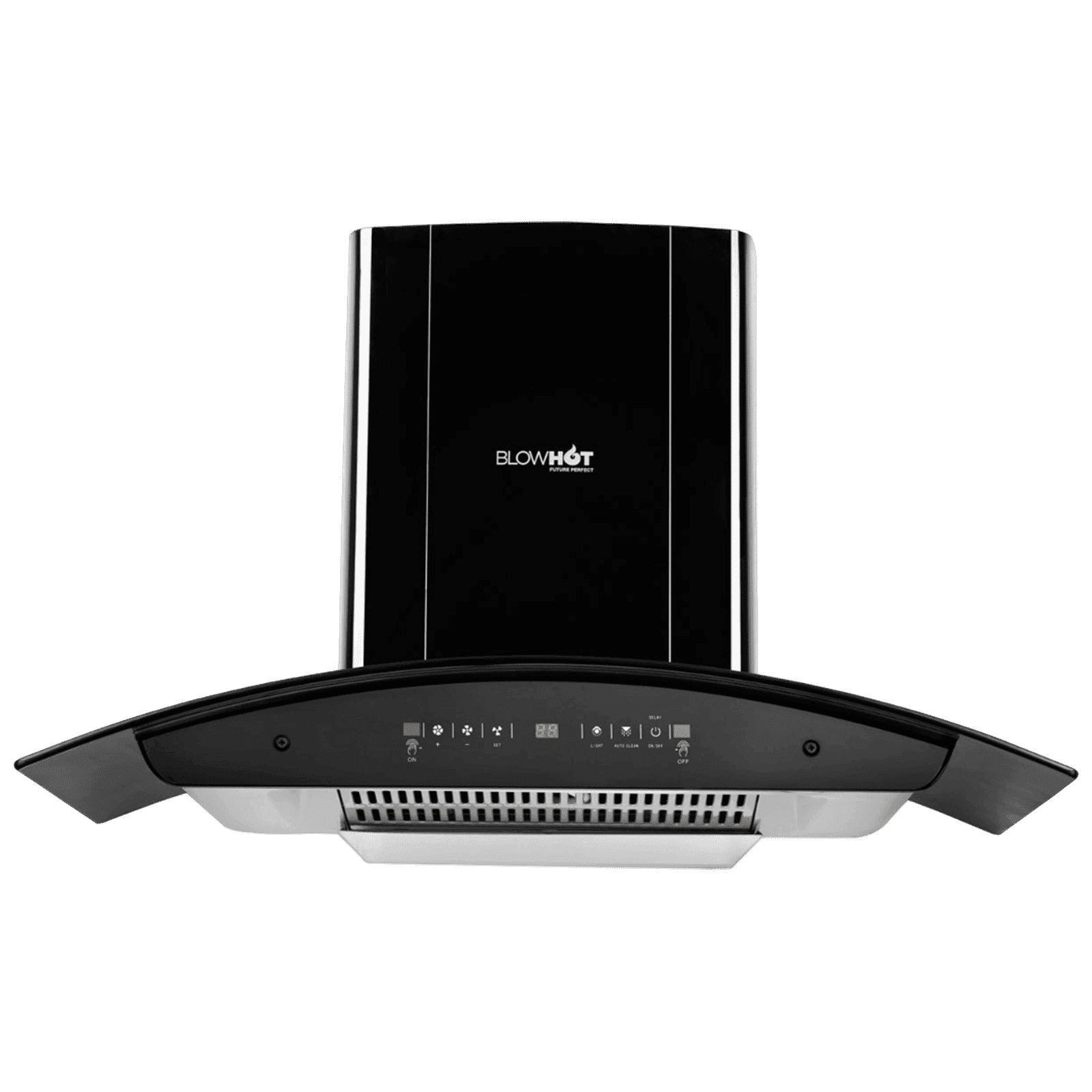
Home Appliances
•04 min read

Buy BLOWHOT ERICA TAC MS PLUS 90cm 1450m³/hr Ductless Auto Clean Wall Mounted Chimney with Motion Sensor (Black) online at best prices from Croma. Check product details, reviews & more. Shop now!
Did you know that the size of your chimney can directly impact its efficiency and safety? Whether you are setting up a new installation or evaluating an existing setup, understanding the standard chimney size is crucial for ensuring optimal performance and safety. This guide provides all the answers you need about chimney dimensions, addressing common concerns and clarifying the measurement process. By the end of this post, you will be equipped with a comprehensive chimney measurements guide, including how to choose the right chimney size for your needs.
A standard chimney size refers to the typical dimensions recommended for chimney installations in various settings such as kitchens, fireplaces, or wood stoves. These dimensions are developed based on safety and efficiency considerations. For example, a standard Kitchen Chimney size is often closely matched to the appliance’s dimensions to ensure that smoke and odor are effectively extracted while maintaining optimal performance.
Several factors influence the ideal chimney size. The fuel type, the kind of appliance, and local building codes all play an important role in determining the appropriate chimney dimensions. In addition, chimney width and height must be correctly calibrated. For instance, a heavier fuel may require a more robust design, while the flue size needs to be in harmony with the overall installation to promote proper ventilation and safe operation.
Chimney dimensions differ based on the appliance they serve. When it comes to kitchen applications, a 60 cm or 90 cm width is typically recommended to match the size of your cooktop or stove. For fireplaces and wood stoves, the chimney must adhere to flue size guidelines to ensure that the smoke is efficiently expelled. This means that understanding the specific requirements for a standard chimney size in each application is essential to maintaining both performance and safety in your home.
Maintaining the proper balance between chimney width and height is crucial. One popular guideline is the “7x rule,” which advises that the chimney height should be at least seven times the width of the flue opening. Observing this rule helps to ensure a consistent draft, which is vital for both efficient ventilation and a safe indoor environment. Failing to maintain proper chimney width and height can compromise the draft and, consequently, the performance of your appliance.
Measuring your chimney accurately is the first step to ensuring that you choose a unit that fits perfectly with your installation needs. Begin by measuring the width at the base of the chimney, then the height from the bottom to the top of the flue. It is important to use a measuring tape and to check twice to avoid common errors that arise from miscalculation. Taking precise measurements will help you refer quickly to a chimney size chart, thereby simplifying the decision-making process.
A chimney size chart summarises recommended dimensions based on different applications. For example, if you have a kitchen, the chart might advise a standard Kitchen Chimney size of 60 cm or 90 cm, while installations for fireplaces may have specific guidelines regarding the flue size. This visual guide is designed to assist you in aligning your appliance’s requirements with the recommended standards, making it easier to choose the right chimney size for a range of settings.
Pro Tip from Tata Neu
When choosing a chimney for your kitchen, always ensure the width matches the size of your cooktop. For example, a 60 cm cooktop pairs best with a 60 cm chimney for maximum efficiency.
If you find that your chimney dimensions don’t conform to the standard sizes, there are several solutions available. Custom designs and adjustments can bridge the gap between non-standard dimensions and the recommended measurements for optimal performance. In some cases, slight modifications or using adaptable install kits can help maintain both safety and aesthetic appeal without compromising on function.
Utilising online chimney size calculators can be a useful way of estimating the correct dimensions for your installation. These tools take into account factors such as fuel type, appliance specifications, and building codes to suggest a precise chimney size. Many of these tools are available for free and provide a straightforward method to reinforce the measurements you’ve taken, ensuring that you choose the best chimney size for your kitchen or any other application.
For kitchen applications, the common sizes are 60 cm and 90 cm, although fireplace chimneys typically have flue diameters ranging from 6 to 8 inches.
The standard chimney size depends on the appliance. Kitchen chimneys usually come in 60 to 90 cm widths, while fireplace installations follow specific flue guidelines that correspond to the dimensions of the firebox.
The 7x rule indicates that the chimney height should be at least seven times the width of the flue opening to guarantee proper ventilation and draft.
Match the chimney width to your cooktop and verify the suction and height requirements for proper performance. Consulting a chimney size chart can simplify this process.
Yes, chimney size calculators are excellent online tools that help determine the exact dimensions needed based on your specific setup.
In summary, selecting the standard chimney size that best aligns with your home’s requirements is essential for maintaining a safe and efficient environment. Accurate chimney measurements prevent operational issues and enhance the overall performance of your installation. Understanding the principles behind chimney dimensions, including the crucial chimney height requirements and the significance of the 7x rule, can simplify the selection process. By exploring these guidelines and referring to a comprehensive chimney size chart, you can confidently opt for the right chimney dimensions, ensuring both better safety standards and improved function. Let the ease and expertise behind Tata Neu guide you to informed decisions that elevate your everyday living experience.